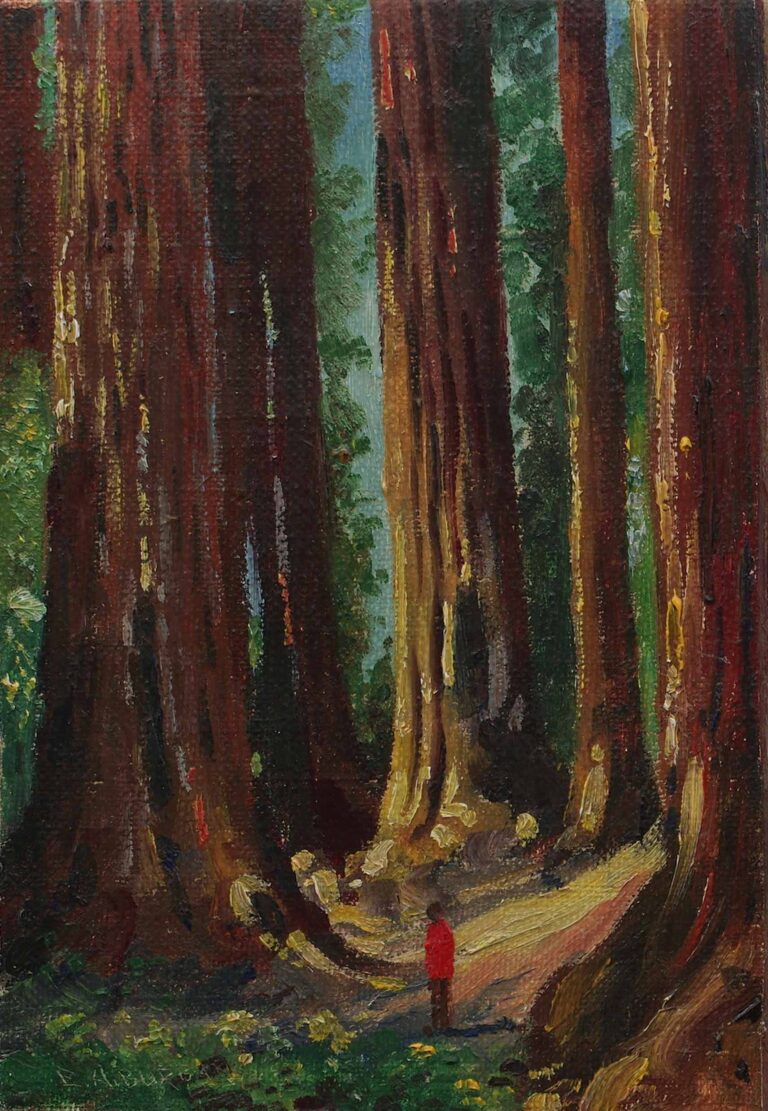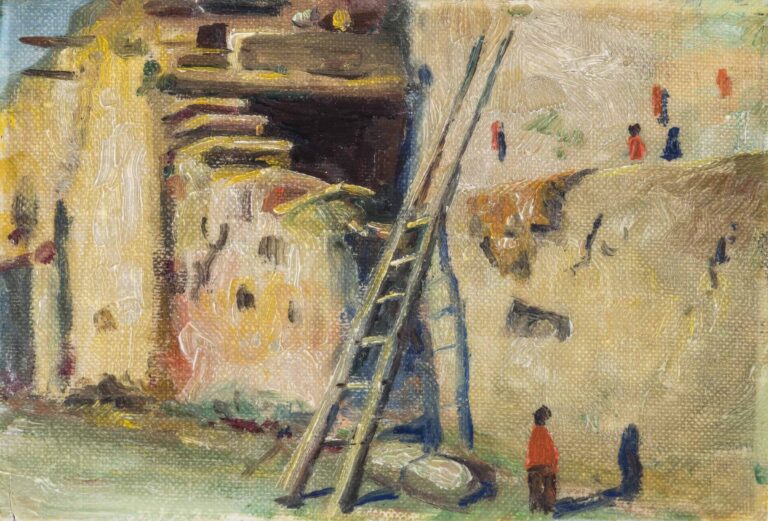Elbridge Ayer Burbank studied life drawing and portraiture at the Chicago Academy of Design and in Munich, Germany (where he met William Robinson Leigh and, likely, Albert Lorey Groll, two artists who would also go on to become well-known Western American painters). Though he opened a studio in Chicago and his work was critically acclaimed, he followed an unlikely career path, electing to spend time in the southern United States sketching African American subjects rather than trading in society portraits.
His first commission and introduction to the West came by way of Northwest Magazine, which hired Burbank to illustrate the Northern Pacific Railway route from Minnesota to the Puget Sound in Washington for the purposes of encouraging homesteading. His career breakthrough, however, came courtesy of his uncle, Edward E. Ayer, president of the Field Museum of Natural History in Chicago, who commissioned him in 1897 to paint portraits of prominent Native Americans in Oklahoma, Arizona, and New Mexico.
By 1902, Burbank was traveling extensively throughout the West—primarily Oklahoma, the Southwest, and the Dakotas—painting Native American leaders, individuals, groups, and ceremonies. He spent a significant amount of time and established a temporary studio in Ganado, AZ (notably, the US Census shows he was living there in 1910 with his young wife, Nettie). There, he befriended Ganado trading post owner Lorenzo Hubbell and did many drawings of Navajo people in red chalk still on view at the Hubbell Trading Post National Historic Site.
Burbank spent almost two decades on his Field Museum mission, becoming one of the most prolific and prominent portraitists of Native American people of his era. In all, he painted over 1,200 portraits of Native peoples from more than one hundred tribes/nations. Burbank is perhaps best known for having painted the famous, turn-of-the-20th-century Apache leader Geronimo five times. He is said to be the only artist to paint his portrait from life.
Burbank’s work figures deeply in the American consciousness of Native Americans. Several prominent museums, along with one of the country’s first department stores (Wanamaker’s), competed with each other in a bidding war over his Native American portraits at the time he made them, and the Chicago public school system ordered 10,000 color reproductions of a single image. In 1944, the artist published the book Burbank Among the Indians, and his images continue to be widely viewed and distributed.
By the mid-1910s, Burbank had left Ganado to open a studio in Los Angeles, CA. During the Depression, he supported himself by drawing and selling scenes for postcards and greeting cards, pictures of famous Americans, and copies of his Native American studies. He spent the last two decades of his life being treated for bipolar disorder. He died in 1949 in San Francisco after being hit by a cable car.





